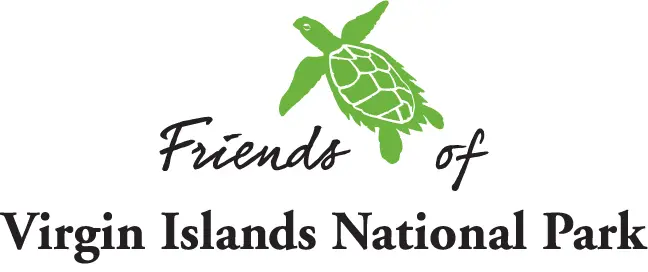Friend’s Monitoring Program records over 3,000 turtle hatchlings
By ANDREA MILAM St. John Correspondent / Daily News
A wave of volunteer momentum has carried the Friends of Virgin Islands National Park-funded Sea Turtle Monitoring and Protection Program through another successful season, with 47 beaches monitored from July through November by 100 volunteers.
Thirty-five nests were documented on St. John and Lovango Cay, with a recorded 3,000-plus hatchlings making it to the sea. All recorded nests were laid by the critically endangered hawksbill turtle. The final nest hatched March 2.
Now in its sixth year, many of the program’s volunteers have previously engaged with the turtle monitoring efforts to observe their assigned beaches for nesting activity.
“It’s a lot of scheduling and coordination but the volunteers are very diligent and very committed,” said Program Director Willow Melamet. “They walk their assigned beach early in the mornings looking for signs of nesting activity.”
Many dry runs, where a female turtle begins to build an egg chamber before abandoning the effort, were observed this season. A turtle may abandon her efforts if she finds the beach is too rocky or tangled with roots. Rainfall can also affect the females’ attempts at digging her nest.
“The sand needs a good moisture content for the turtle to be able to get down to the necessary two feet deep to lay her eggs,” said Melamet. “There was a lot of response on our end due to a lot of nesting activity, but not all resulted in actual nests.”
This was the first year Lovango Cay was monitored, and two nests were recorded there. Windswept Beach, a small cove just east of Trunk Bay, boasted a recorded 10 nests with 1,158 hatchlings.
Retired Virgin Islands National Park Chief of Resource Management Rafe Boulon, who lives at Windswept and recorded the nesting activity there, is likely seeing nests laid by the offspring of turtles who nested at Windswept during his childhood.
“Rafe has been on that land since he was a child, so he’s protected these turtles who’ve now potentially come back 30 years later to nest,” said Melamet. “It’s a special beach for sure.”
One of the Windswept nests experienced a 100% success rate, where all of the eggs produced hatchlings—a first for Melamet and her fellow program director, Adren Anderson.
The turtle team helped many hatchlings escape rooty obstacles this year during nest excavacations, which the trained experts conduct between three and five days after hatchlings first emerge.
The trapped hatchlings are likely a byproduct of the hawksbills’ efforts to nest high up on a beach to avoid winter swell activity.
“We found lots of hatchlings still left in the egg chamber, either because they were physically unable to penetrate through the roots or their flippers were caught on the roots,” said Melamet. “This is another reason the program is so important, because in theory, they wouldn’t make it out without our assistance.”
Thirty-four nests is high among the average 20 to 40 hawksbill nests laid on St. John each year, but the island’s turtle populations continue to be impacted by hazards like boat strikes and fibropapillomatosis, a contagious disease that causes tumors to grow in the turtles’ soft tissue.
Six fatal boat strikes were recorded last year, said Melamet. The Sea Turtle Assistance Rescue Network, a group of volunteers who are trained to respond to sick, injured, and distressed sea turtles, works to take affected sea turtles for medical treatment. Melamet detailed steps boaters can take to help avoid striking turtles as they come to the surface to breathe.
“Slow down for those below,” she said. “Go slower in the mooring fields. Do a safety briefing with your guests on board; encourage them to tell you if they spot a turtle. Have a dialogue about why you’re going slower in an area where turtles are known to be, and educate them on proper snorkeling etiquette including not harassing the turtles.”
The stress of being chased, touched, or grabbed is likely facilitating the spread of fibropapillomatosis, particularly at Maho Bay, where juvenile green sea turtles feed on the sea grass. A photographic catalogue documenting tumor development on turtles at Maho is currently underway, said Melamet.
“It’s alarming to see the tumors, especially around their eyes because you need your eyes to be able to forage and evade predators and boats,” she said. “The spread of the disease is linked to human-based and environmental stressors.”
Melamet and Anderson educate beach-goers on Tuesdays and Thursdays from 9 to 11 a.m. from a “Let’s Talk Turtles” booth at the Maho Bay pavilions.
The Sea Turtle Monitoring and Protection Program directors also regularly interact with the island’s schoolchildren through the Friends’ School Kids in the Park program.
Despite an influx of visitors and heavy traffic on the island’s beaches and in surrounding waters, turtles are still finding what they need on St. John in order to continue the cycle of life.
“St. John is still providing that sanctuary, with pristine beaches suitable for nesting,” said Melamet. “We do have a lot of beaches for them to choose from. The program is well established with a strong foundation now, so with the support of the Friends, the park, and the community, the future is bright. The Adopt a Turtle Program and Friends memberships help fund our program. Donations are the reason we’re able to do what we do.”
To learn more or to donate, visit www.friendsvinp.org/sea-turtle. To sign up to volunteer with the Sea Turtle Assistance Rescue Network, email vinpturtles@friendsvinp.org.
